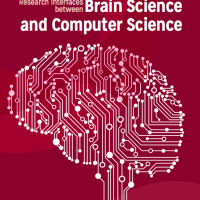Video Analysis for Body-worn Cameras in Law Enforcement
In May, The White House Office of Science Technology Policy, Department of Commerce, and the Arnold Foundation approached the Computing Community Consortium (CCC), as a community organization of computer science researchers, to lead a conversation for law enforcement to learn about the state of the art in video-analysis techniques and how they may be applicable to analyze and improve law enforcement practice. This was a timely opportunity to provide input to a burgeoning application space: police body-worn cameras.
The CCC brought together a panel of computer vision experts and law enforcement personnel. Their subsequent discussions resulted in the recently released Video Analysis for Body-worn Cameras in Law Enforcement white paper.
The white paper highlights some of the technology needs and challenges of body-worn cameras, and it relates these needs to the relevant state of the art in computer vision and multimedia research. It concludes with a set of recommendations to policy makers, to police departments planning to deploy body-worn cameras on officers, and to system manufacturers.
Policy Recommendations
Usage Protocol- We recommend that policy makers develop and provide police departments and system manufacturers with recommended best practices for operating body-worn sensors.
Public Education- In conjunction with educating police officers on the proper use of sensors, we recommend developing a plan for educating the public and journalists on how to access and correctly draw conclusions from the data.
Technology Recommendations
Multimodal Sensing- We recommend a stereo pair of wide field-of-view, high-resolution cameras, microphones with sufficient dynamic range to capture human speech, an in-built inertial measurement unit, and GPS.
Media Central- We recommend the development of a central media facility that police departments across the country may access to store and analyze their data.
Indexing- The data should be indexed against the state-of-the art visual and audio indexing technologies. The data should be stored indefinitely.
Open Standards- The creation of open standards and platforms will promote minimal technical barriers to data export, access, and exchange.
Research Recommendations
Standards- Ensure data is consistent and available across jurisdictions.
Research funding- Research funding, both basic and applied, is needed to facilitate the best use of these novel highly informative information sources.
Technology Transition- We underscore the need for open standards and interoperability to cultivate an ecosystem for startups and other private investments in the sector.
Datasets and Benchmarks- Much recent progress in the computer vision and multimedia communities has been driven by the availability of large, expert annotated data sets. The computer vision community has significant expertise in creating and curating such data sets and should be intimately involved.
Continued Involvement Among Video Processing Research Community- Some mechanism for establishing immediate and continued involvement of the academic and industrial research communities is needed.
To learn more, please read the entire white paper.










